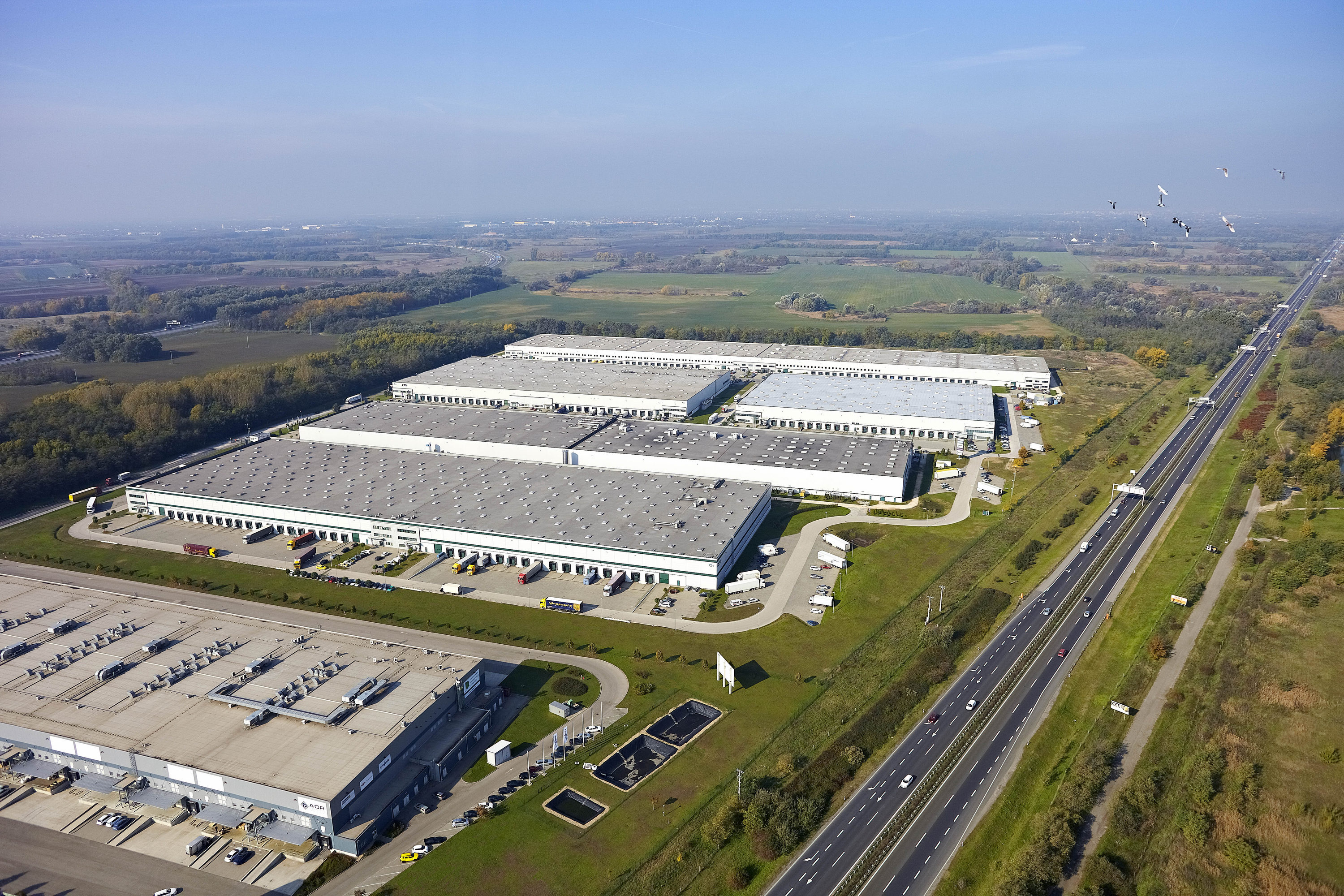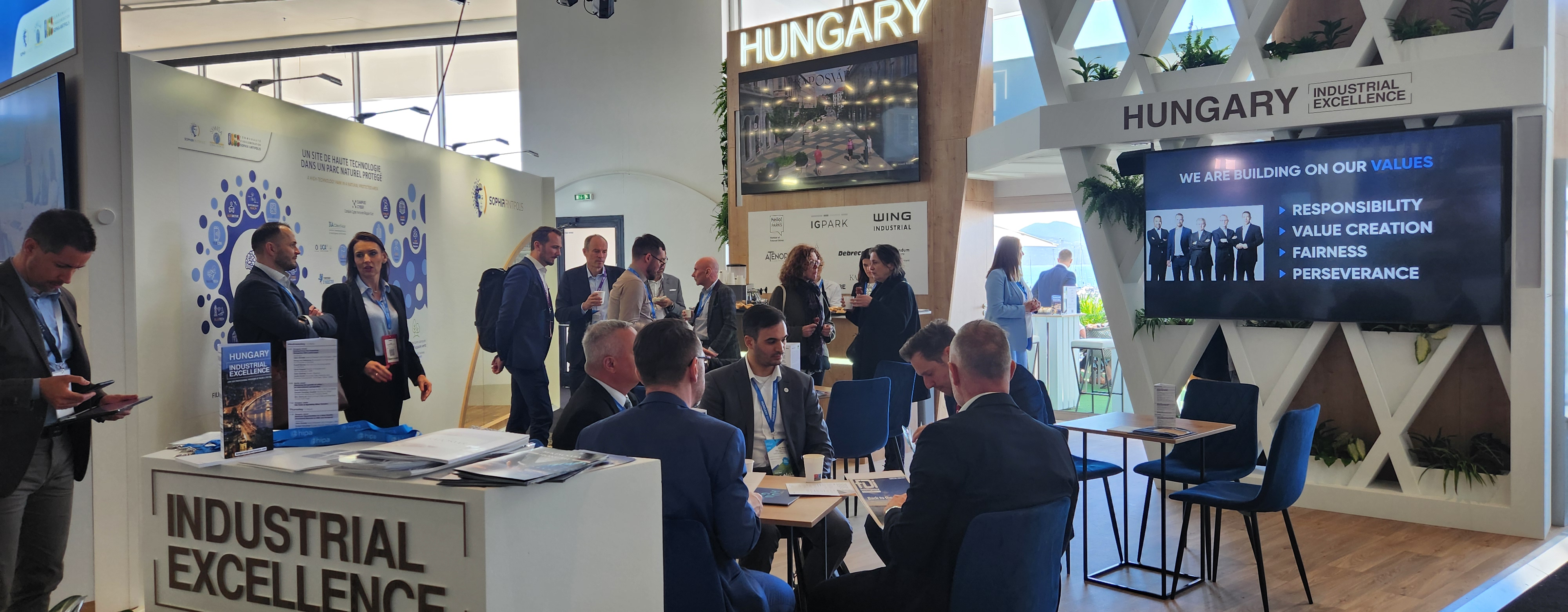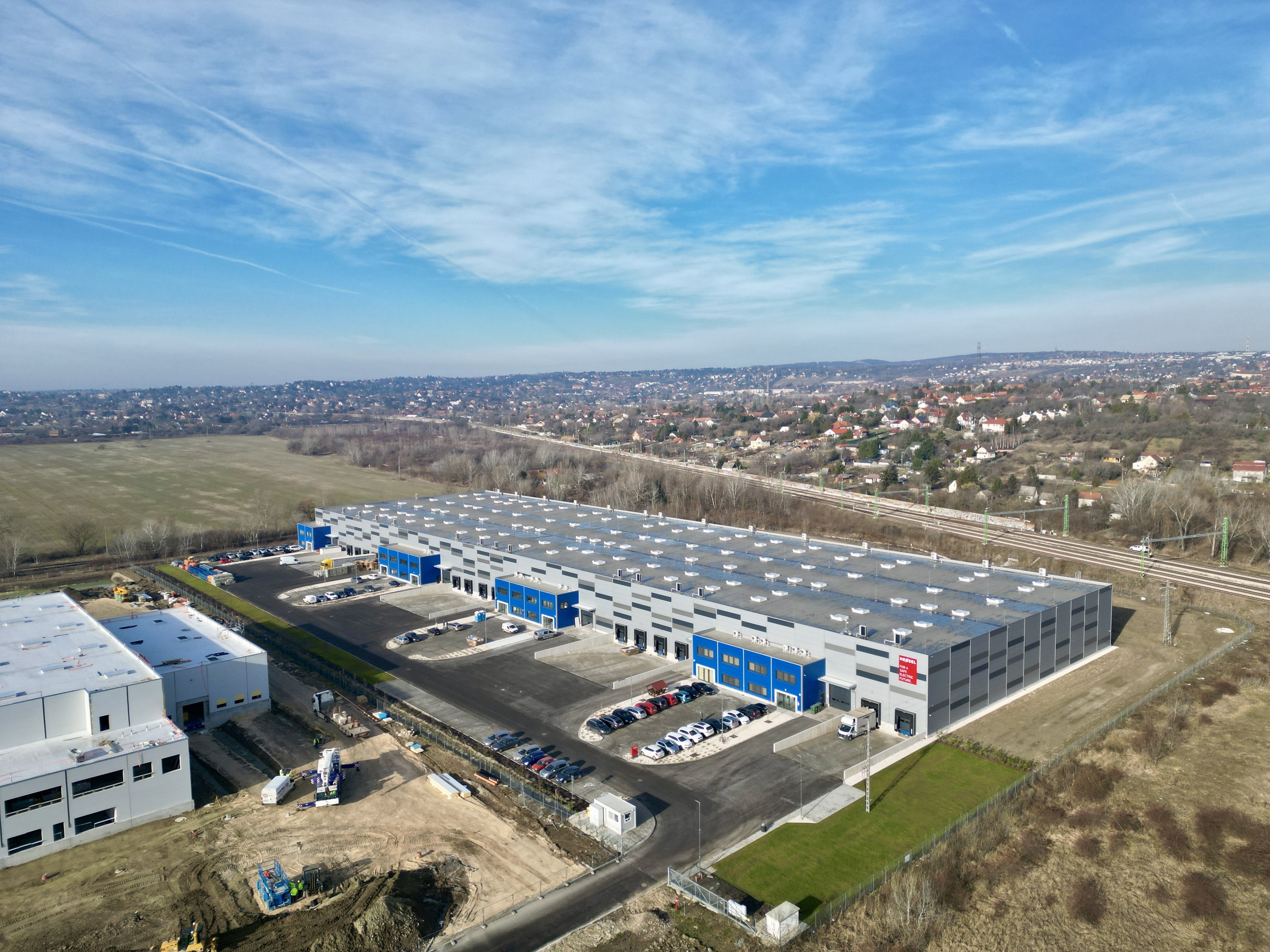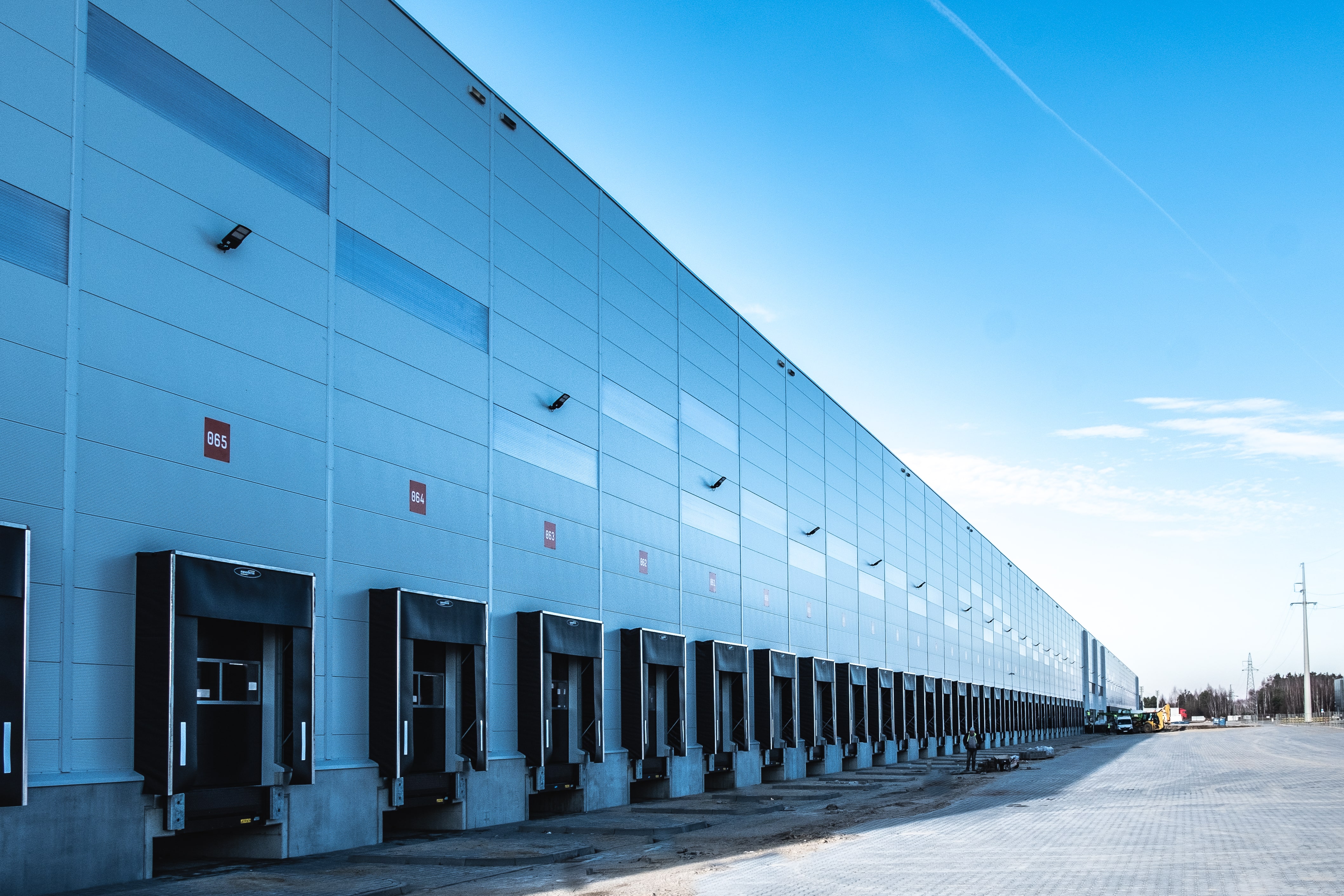Hungary’s Light Industrial Boom Continues Apace

Aerial view of Prologis Park Budapest-Gyál.
The industrial market is booming, with leading CEE regional industrial park operators and Hungarian developers participating in an increasingly active market. That has grown on the back of increasing logistics activity in the COVID-19 and post-pandemic environment and greater industrial space requirements needed to meet significant FDI demand, notably in the electric vehicle and EV-related industries.
The industrial market boom was initially centered around the Greater Budapest area but has now also moved to industrial hubs across the country, providing badly needed economic development outside the capital.
The total industrial stock in Hungary is still relatively small compared to the major Central European industrial markets such as Poland, the Czech Republic and, increasingly, Romania. However, a provincial logistics and light industrial network has emerged, as is the model in leading markets.
With the rising development activity and vacancy rate, albeit from record low levels, developers are increasingly adopting the safer built-to-suit option rather than building on the more adventurous speculative model. This also enables developers to meet ever more specific tenant sustainability demands from the initial design and construction phases to property and facility management.
“Perhaps the most important thing to note is that speculative developments have not stopped despite all the external circumstances, and even though vacancy is slightly on the rise, there is still need on the demand side,” comments Zsófia Korda, corporate sales relations and business development officer at Wing. The company has ongoing logistics projects in the Budapest area.
“The stream of Far Eastern capital into Hungary continues to be significant. Demands generated by FDI fundamentally dominate the market all over the country, including the manufacturers’ catchment area,” Korda says.
“In the last four years, every year has seen record levels of new supply in the industrial property market, with nearly 400,000 sqm in the last two years, 50% of which has already been pre-let. In the next 12-18 months, we expect to see the same volume of new supply,” she adds.
Geographical Spread
As of the turn of the year, there was 5 million sqm plus of modern logistics and light industrial space in Hungary, with 3.5 million sqm in the Greater Budapest area and 1.6 million sqm in provincial centers, according to the Budapest Research Forum (consisting of CBRE, Colliers, Cushman & Wakefield, Eston International, iO Partners and Robertson Hungary).
Vacancy stands at 6% percent in Greater Budapest and close to 8% in the rest of the country. Cushman & Wakefield have traced eight industrial projects in the Greater Budapest area that are due to be completed this year and a further 10 in the regions.
“In the current market situation, we are focusing more on BTS developments to provide the best possible service to our customers. At the same time, our latest speculative development was handed over just a few months ago in Szigetszentmiklós, at Prologis Park Budapest–Sziget II,” says Zsuzsanna Hunyadi, leasing and customer experience director at Prologis Hungary.
“At the moment, our vacancy rate is 5% due to the recent delivery of new speculative buildings. The focus is currently on BTS developments at Prologis, and other market participants seem to follow the same strategy. This tendency is expected to continue in the coming years as the general market indicators also show an increase in vacancies and a decrease in market absorption capacity in all countries where we are present in Europe,” she notes.
Cushman & Wakefield has traced 500,000 sqm of industrial and logistics space under construction in Hungary, the majority (358,000 sqm) in the Greater Budapest area, in a market that has traditionally been capital-centric.
“The surge in demand during and after the pandemic led to tight availability in 2020. Consequently, there was a notable acceleration in development activity with over 1 million sqm added to Greater Budapest in the last three years,” comments the consultancy.
“The supply of new developments continues unabated both in volume and pace. This has resulted in increasing vacancy rates, indicating a changing market dynamic. Consequently, speculative development is expected to slow in Greater Budapest as developers adopt cautious approaches to prevent potential market oversupply,” Cushman & Wakefield adds.
As a sector with potential long-term demand and record low vacancy rates, the industrial market has been attracting CEE regional industrial park operators in addition to Hungarian developers, moving into what has become an attractive market.
The leading players in terms of supply are HelloParks, established as part of the Hungarian Futureal group, and prolific developer CPP. Wing, an established Hungary-based CEE developer, has ongoing industrial projects in the Budapest area.
Countryside Projects
Outside of the capital, CTP has a project in Komárom (93 km west of Budapest by road), the Belgium VGP has developments in Kecskemét (92 km southeast of the capital) and Győr (120 km west) and the leading European developer, Panattoni, has a development project in Debrecen (230 km east).
The Hungarian Infogroup is developing its Inparks network in provincial industrial hubs. This reflects a shift towards secondary cities with a significant number of developments planned.
“Infogroup continues to specialize in the industrial and logistics regional markets as we see that there is demand and we are targeting a number of different locations in Hungary, but primarily those areas which are considered industrial hubs, which are in eastern, northern and, more recently, southern Hungary,” says Balázs Czifra, director of sales and asset management at the company.
“We try to stay ahead of demand by preparing suitable land to accommodate any new projects. For example, we have acquired a site in Szeged (176 km southeast of Budapest by road), as it is obvious that once the Chinese car manufacturer BYD’s plant is established, there will be high demand in the area. In seven other locations, we continue planning and permitting so that when there is a requirement, we can act quickly,” he says.
“As for development types, we currently prefer built-to-suit, but we are also developing on a speculative basis. Demand typically relates to the most recent FDIs in the automotive sector and from logistics suppliers,” Czifra adds.
All of Prologis’ buildings in Hungary are located in the Budapest area, close to the M0 orbital motorway, according to Hunyadi.
“We believe demand is highest for distribution centers close to the city center, with easy access to airports and international transport routes. These attributes also make our warehouses more sustainable, in line with our environmental goals,” she says.
“We still believe that, for efficient and sustainable warehousing, it is essential for developments to be close to major transport hubs. For this reason, we continue to plan developments in Hungary that are close to Budapest,” Hunyadi adds.
This article was first published in the Budapest Business Journal print issue of April 8, 2024.
SUPPORT THE BUDAPEST BUSINESS JOURNAL
Producing journalism that is worthy of the name is a costly business. For 27 years, the publishers, editors and reporters of the Budapest Business Journal have striven to bring you business news that works, information that you can trust, that is factual, accurate and presented without fear or favor.
Newspaper organizations across the globe have struggled to find a business model that allows them to continue to excel, without compromising their ability to perform. Most recently, some have experimented with the idea of involving their most important stakeholders, their readers.
We would like to offer that same opportunity to our readers. We would like to invite you to help us deliver the quality business journalism you require. Hit our Support the BBJ button and you can choose the how much and how often you send us your contributions.











